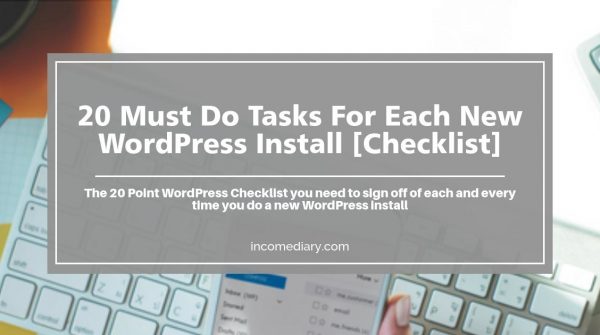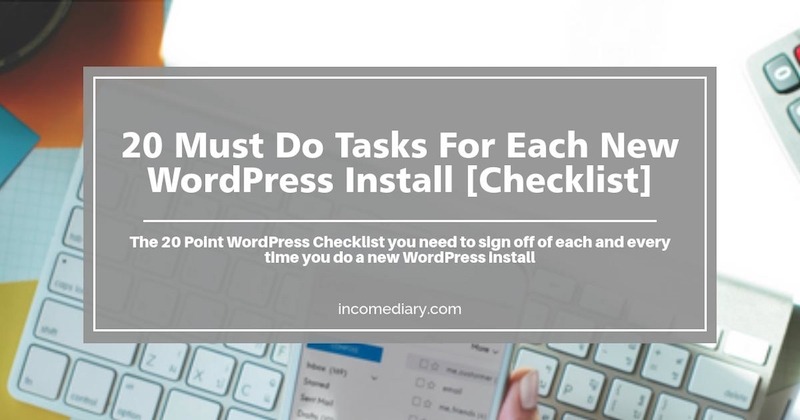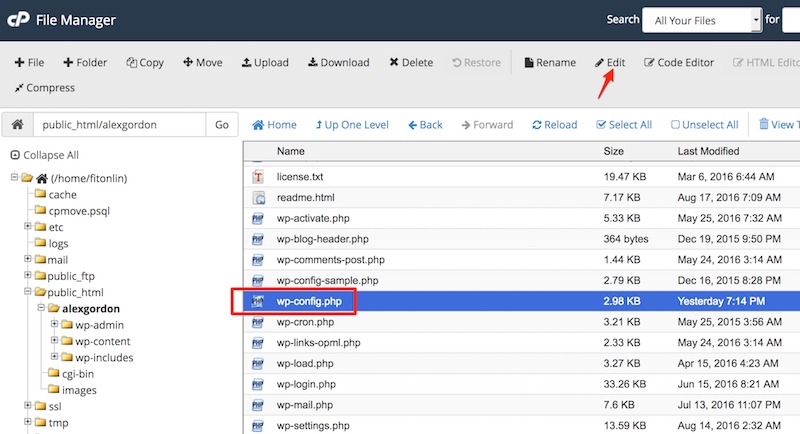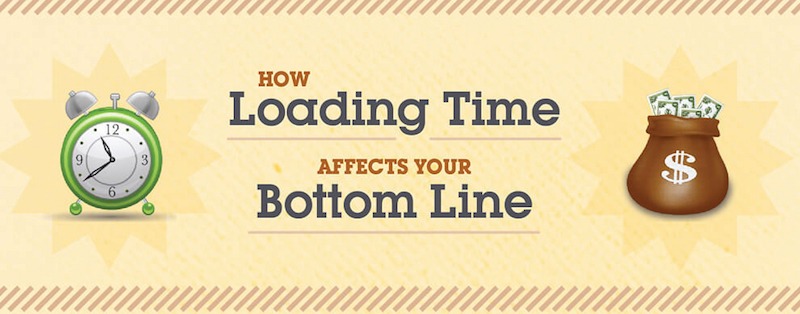
Every time we do a new WordPress install there are a number of important tasks we should complete.
Miss out on these and you will miss out on a lot of traffic and success and income.

Even if you are familiar with some of the tasks in this New WordPress Install Checklist – chances are you will be missing out on some key tasks, that can make the difference between success and failure.
New WordPress Install – Checklist and Guide
Getting the best out of your new WordPress site requires some tweaking and changes to the standard setup, starting with….
1. Create a SEO Friendly Permalink Structure
This is the first and most important task in every new WordPress install for me.
Permalinks are the permanent URLs (address in simple words) to your individual blog posts, pages and categories. The URL to each blog post should be permanent, and never change hence permalink.
To change WordPress permalink structure, go to Settings -> Permalinks and select your desired permalink structure.
Your URL structure should be as simple as possible. It is recommended to use Post name as your permalink. It is more readable and search engine friendly.
Bad permalink Structure: http://www.example.com/?p=123
Good permalink structure: http://www.example.com/image-seo
Google recommend that you use hyphens (-) instead of underscores (_) in your URLs. You should read article about simple URL structure by Google to learn more.
2. Delete Default Post/Page And Rename Category
Don’t forget to delete (or Edit) default sample post and page. Go to Post > Categories and rename default category.
I am always quite amazed at the number of blogs that still have their default “HELLO WORLD” first post!. Please don’t let that happen on you next new WordPress install!
3. Create Welcome Post And About Page
After deleting default post and page create a welcome post and about us page. About us page is very important, Read 9 Simple Tips For Making An About Us Page That Works For Your Brand by Ben Austin at MOZ blog.
4. Complete User Profile
Go to Uses > Your Profile and complete your profile. Add your first name, last name, website URL and Biographical Info. Signup for Gravtar.com account and upload your picture.
‘Your Gravatar is an image that follows you from site to site appearing beside your name when you do things like comment or post on a blog. Avatars help identify your posts on blogs and web forums, so why not on any site – gravatar.com’
5. General Settings – Title, Tagline And Time Zone
Go to the Settings > General settings page to add your site title and tagline. (wp-admin/options-general.php)
Also, when there, select time zone, date & time format and site language.
If you want to allow people to register on your site select Anyone can register checkbox and set default user role for new members.
6. Choose A Mobile Friendly Theme
In February 2015, Google announced that the mobile-friendly update will boost the rankings of mobile-friendly pages. Read FAQ’s about Google’s Mobile Friendly Update.
Conversely, pages designed for only large screens may see a significant decrease in rankings in mobile search results – Google Developers Blog
Choose your theme wisely. Make sure it is fully responsive and mobile friendly. There are thousands of free and premium themes available.
Default WordPress themes such as TwentySixteen and TwentyFifteen are very popular themes. You don’t need a theme with hundreds of features you may never use. Choose a theme which suits your needs.
If your theme is not responsive and mobile friendly, install and activate the mobile theme for your site. JetPack has a mobile theme module.
7. Widgets And Navigation Menus
Add necessary widgets to your sidebar area. Recent post, recent comments and categorize widget are common.
Create a navigation menu and add the most important link in the main navigation menu. Make sure your navigation menu has a logical structure and menu is responsive and mobile friendly.
Recommended Read: 17 Major Main Menu Mistakes – an article by Marvin Russell on how to optimize your navigation menus.
8. Install Essential Plugins: Akismet And Jetpack
JetPack is one of the most popular plugin with more than 30 modules for different features. You can activate JetPack stats module to view how many people visit your website daily.
JetPack’s mobile theme can make your website mobile friendly and with sharing module you can add social media sharing buttons. Site Icon, Site Verification Activate and Sitemaps are very useful features.
Spam is a challenge for Bloggers – but fortunately there are Plugins that will help – such as LH Zero Spam
LH Zero Spam blocks registration spam and spam in comments automatically without any config or setup.
And of course there is also the Akismet: Anti-Spam Plugin for WordPress
9. Install SEO Plugin + Read SEO Basics
Search Engine Optimization is a must for every website and blog.
Install Plugins such as: Project Supremacy (14 Day Free Trial), Yoast SEO, All in one SEO or any other SEO plugin to optimize your content for Search Engines.
Read some articles about SEO to learn how to write SEO Friendly Content.
Optimize every blog post for Search Engines. Target keywords.
Optimize images for SEO as well – see Optimize images for SEO
Read Google’s image publishing guidelines and follow these guidelines for better search engine ranking.
10. Verify Website And Social Media Account
Make sure Search Engine can crawl your website properly. Go to settings > Reading and make sure * Discourage search engines from indexing this site* option is unchecked.
Use Yoast SEO or Jetpack Site Verification module to verify your website. Add your websites to Google webmaster tools and Set preferred domain (www or non-www).
The preferred domain is the one that you would like to use to index your site’s pages (sometimes this is referred to as the canonical domain). Links may point to your site using both the www and non-www versions of the URL (for instance, http://www.example.com and http://example.com). The preferred domain is the version that you want to use for your site in the search results – for more information see Google Search Console Help
11. Create Contact Page
Make it easy for people to contact you. Create a Contact us page and add a contact form. Contact form 7 is the most popular plugin to create contact forms, if you are using Jetpack, Go to Jetpack Settings page and activate contact form module.
12. Optimize Website For Speed
If your website takes too much time to load, You will lose your visitors. 83% of visitors expect sites to load in less than 3 seconds. So make sure to choose a reliable and fast hosting provider. The excellent infographic below (from KISSmetrics) explains how loading time affects your bottom line! [Click image to view]
According to a report by Kissmetrics, 47% of consumers anticipate a website page to load within two seconds. If it does not, they are unlikely to stay around.
There are many free and premium plugins available to optimize your website for speed. Install caching (W3 Total Cache, WP Super Cache) and image optimization WP SmushIt plugins. Choose a lightweight theme from an experienced developer.
You don’t need to install dozens if plugins. Install most important plugins only. If you are not going to publish a lot of images, don’t install an image optimization plugin. Use an online Image Compression Service to optimize images for each blog post.
Read 10 Ways to Speed Up Your Website by Kathryn Aragon at crazyegg blog to learn more.
13. Install Security Plugins
As of March 2016, Google reports that over 50 million website users have been greeted with some form of warning that websites visited were either trying to steal information or install malicious software. Securi has published a report How Websites Get Hacked and the Malware Used.
WordPress websites are considered possible targets for many hackers. make sure website is secure and safe because hackers are always out there trying to invade.
Don’t use Admin as your username, choose a complex password. Install and activate two-factor authentication plugin to secure your login page.
There are dozens of free and premium WordPress Security plugins available. Wordfence Security is very popular free security plugin. Read Hardning WordPress guide at WordPress Codex to learn more about WordPress security.
Themes and Plug-ins also need to be updated. You should always update all plugins and themes regularly. If you are not using any plugin or theme delete it. There is no point in keeping it. Try to avoid free and premium themes. Download free themes from trusted developers.
WordPress Theme directory is the best place to find free themes. If you can afford a premium theme buy a premium theme as they tend to be faster, safer and better coded.
14. Regular Back Ups
Backing up your entire WordPress site is simple and easy. Free and premium plugins will do hard work for you. Must install a free or premium backup plugin.
Site backups are essential because problems inevitably occur and you need to be in a position to take action when disaster strikes. Spending a few minutes to make an easy, convenient backup of your database will allow you to spend even more time being creative and productive with your website – WordPress Backups
I personally use VaultPress for daily backups. It makes it easy to keep an up-to-date backup of your site with both daily and realtimereal time syncing of all your WordPress content. Basic plan (daily backups) is starting from $5/month.
BackUpWordPress is a free plugin to backup your entire site including your database and all your files on a schedule that suits you.
15. Start Collecting Emails: Build Your List
Email marketing is the king of the marketing kingdom and I have seen results like 3800% ROI and $38 for every $1 spent. Read 70 email marketing stats to learn more.
email is not dead. write great content and ask your readers to join your email list. Email marketing gives your blog an edge in the tough market. daily, weekly or even monthly email will keep your blog in your subscriber mind.
Add an email sign up form in the header section, below post and sidebar. Offer something exciting. people are more likely to join your email list if you will offer them something interesting (ebook, video course, free templates etc).
The world famous popup software from PopupDomination is the perfect Web App for collecting email subscriptions.
16. Limit the number of posts revisions
WordPress post revisions are on by default, WordPress automatically creates revisions of posts and pages, the old version is retained so user can revert back at any time.
The WordPress revisions system stores a record of each saved draft or published update. The revision system allows you to see what changes were made in each revision by dragging a slider (or using the Next/Previous buttons) – WordPress Revisions
Older revisions are never deleted. WordPress stores post revisions in the database. By reducing the database size, we can also speed up your WordPress site.
It is possible to limit the number of posts revisions that WordPress stores in the database. Post revision limit can be set in wp-config.php. (access usually via your CPanel)

Simply add following line of code in your wp-config.php file.
define( ‘WP_POST_REVISIONS’, 3 );
Above line of code will save only three revisions of every blog post.
For a more detailed explanation of this process (which can come with some risks if done wrongly) check out this Blog Post on WordPress Post Revisions
Fortunately, there is much easier option in the form of a PLUGIN – called WP Revisions Limit – which will be the best option for most of us!
17. Disable WordPress Login Hints
By default, WordPress shows error messages whenever an incorrect username or password is used on the login page. These error messages can be used as a hint to guess a username, email address, or password.
You can disable login hints in WordPress login error messages with a simple function. Just add the following code in your functions.php file. Source GitHub
function no_wordpress_errors(){
return ‘Nothing to see here, move along!’;
}
add_filter( ‘login_errors’, ‘no_wordpress_errors’ );
18. Enable 2-Factor Authentication
Two Factor Authentication is an extra layer of security that requires not only a password and username but also an additional code.
Logging in with a password is single-step authentication. It relies only on something you know. Two-step authentication, by definition, is a system where you use two of the three possible factors to prove your identity, instead of just one. In practice, however, current two-step implementations still rely on a password you know, but use your Phone or another device to authenticate with something you have – WordPress Two Step Authentication
Google Authenticator is a free WordPress plugin to add two-factor authentication to your blog. You will have to install the Google Authenticator app for Android/iPhone/Blackberry.
19. Add Favicon And Mobile Icons
The WordPress site icon is used as a favicon and mobile icon for your site, and will persist between theme switches.
Favicon is a small icon that is displayed next to the URL of your site in a browser’s address bar and It also is used when you bookmark a webpage.
From WordPress 4.3 onwards, You can use the Site Icon feature that is built into WordPress. To add a new site icon go to Appearance -> Customize and click on Site Identity.
20. Remove WP Generator Meta Tag (WordPress Version)
Quite often bloggers do not update to the latest version of WordPress – and this can become a security risk that hackers will exploit. (because outdated versions of WordPress sometimes have known security flaws)
For this reason it is advised that you don’t make your WordPress version visible. (public)
To remove details of the WordPress version you need to place the following code in your theme’s functions.php file.
remove_action(‘wp_head’, ‘wp_generator’);
Again there is a Plugin to do the job – try WP Remove Generator Meta Tag
Of course you should also update to the latest version of WordPress on a regular basis.
About Author
Tahir Taous if founder of JustLearnWP.com, where he you can find in-depth article and tutorials about WordPress, Theme Development and Blogging.
Additional Reading:

![[GET] Wp UCanHide – Hide parts of posts in wordpress for registered users only!](https://seo.maxiaodong.com/wp-content/plugins/wordpress-23-related-posts-plugin/static/thumbs/5.jpg)
![[GET] Traffic Getting SEO Plugin for WordPress](https://seo.maxiaodong.com/wp-content/plugins/wordpress-23-related-posts-plugin/static/thumbs/6.jpg)
![[GET] Premium SEO Pack for WordPress](https://seo.maxiaodong.com/wp-content/plugins/wordpress-23-related-posts-plugin/static/thumbs/8.jpg)
![[GET] Backlink Scrapebox Lists – WordPress, Blog Engine, Movable Types,Powerful Backlinks](https://seo.maxiaodong.com/wp-content/plugins/wordpress-23-related-posts-plugin/static/thumbs/17.jpg)
![[GET]CSV-2-Post Plugin For WordPress](https://seo.maxiaodong.com/wp-content/plugins/wordpress-23-related-posts-plugin/static/thumbs/25.jpg)
![[GET] WordPress For Dummies – 7th Edition (PDF)](https://seo.maxiaodong.com/wp-content/uploads/2017/11/8055c20b3d60f4d-150x150.jpeg)
![[GET] – Popup Plugin for WordPress – Layered Popups v6.19](https://seo.maxiaodong.com/wp-content/uploads/2017/11/banner-light-150x150.jpg)
![[GET] ProfitBuilder Nulled – The #1 Drag & Drop Marketing Page Builder For WordPress](https://seo.maxiaodong.com/wp-content/plugins/wordpress-23-related-posts-plugin/static/thumbs/1.jpg)
![[Get] Broadfast Premium Autoresponder Plugin for WordPress](https://seo.maxiaodong.com/wp-content/plugins/wordpress-23-related-posts-plugin/static/thumbs/24.jpg)
![[GET] “Tell-A-Friend” Plugin for WordPress](https://seo.maxiaodong.com/wp-content/plugins/wordpress-23-related-posts-plugin/static/thumbs/26.jpg)
![[GET] MyMail – Email Newsletter Plugin for WordPress](https://seo.maxiaodong.com/wp-content/plugins/wordpress-23-related-posts-plugin/static/thumbs/13.jpg)
![[GET] MyMail – Email Newsletter Plugin for WordPress](https://seo.maxiaodong.com/wp-content/uploads/2017/11/fmQPH6a-150x150.jpg)